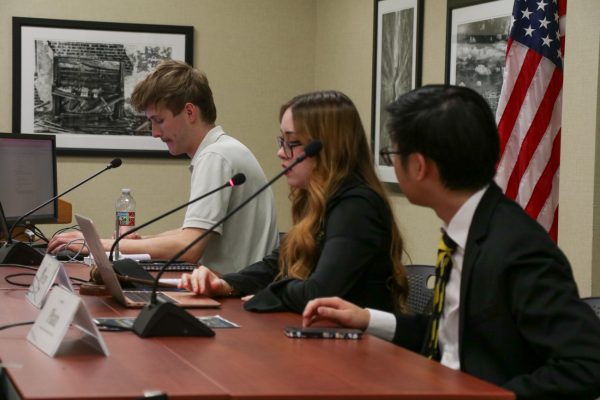Compensation goals lead to pay increases at Wichita State
(Illustration)
After $6 million in salary increases for 1,053 faculty and staff this fiscal year, the university is looking to provide another bump for eligible faculty and staff this summer, for about 1,700 employees.
These raises come after years of planning between Human Resources and university administration to solidify and grow a market-based compensation system that helps determine pay.
Vicki Whisenhant, HR executive director, broke down the relatively new market-based compensation structure for The Sunflower.
“It’s a complicated subject,” Whisenhant said. “(Despite) having 30 years of HR experience, it’s still something I constantly ask the experts about.”
In a market-based approach to salary, individuals would get paid similarly to what others in their field would make. Whisenhant said this approach to compensation allows the university to compete for top faculty.
“As the talent pool … gets smaller and smaller, this is going to become even more important for us to get to the point where we are offering more competitive wages,” she said.
According to Whisenhant, Wichita State is at 86.4% of the median market pay, meaning the university lags behind what other universities pay their faculty.
“Our overall goal is to get to the median so that we’re not leading or lagging the market,” she said.
Background
Wichita State began transitioning to a market-based compensation program in the fall of 2019 and launched the program at the start of the current fiscal year (FY23).
Whisenhant said that the market-based approach was adopted to ensure the university had equitable pay practices. Before the program, Whisenhant said that a set philosophy or methodology was not in place.
“It wasn’t consistent,” Whisenhant said. “There wasn’t the real science behind it.”
The new program coincided with the beginning of the five-year Diversity, Equity and Inclusion plan.
“One of the key cornerstones of that plan was equity,” Whisenhant said. “And that’s where pay comes in, making sure we have pay equity across all the campus.”
Now, HR utilizes purchased salary market data from multiple sources to determine pay for employees.
“It’s data that we purchase that’s compiled by these professional organizations that we use to do the market part of the analysis,” Whisenhant said.
Whisenhant noted the distinction between HR and university leaders when it comes to compensation. While HR focuses more on compiling and providing recommendations, university leaders are in charge of making the final decision.
“We don’t make all the decisions,” she said. “Anything with budget … those (decisions) are made by our provisional leaders of the university with (HR’s) recommendations that come from stakeholders.”
Goals for pay, then and now
After planning and mapping out different job categories, the university “started” the market-based program last year, when it first did an analysis of pay across the board.
With this analysis came a few goals:
-Determining if any inequities existed on the basis of race, ethnicity or gender (none were found)
-Analyzing equity based on similar positions
-Studying the market
“We do that in order to ensure that we’re moving the needle forward,” Whisenhant said.
The goals last year did not account for faculty awards and achievements, like professor incentive reviews. The professor incentive review program allows tenured professors that have been at WSU for six years to undergo a voluntary review to receive some kind of pay bump.
“That was not one of the pain variables that we looked at last year,” Whisenhant said at a Budget Advisory Committee meeting last month. “It wasn’t a part of the analysis, so it’s created some issues with not having that in place.”
Additionally, last summer, the university’s remedial pay increases to those who were lagging behind others in their field only applied to select individuals and, for the most part, didn’t include employees with more experience.
“We knew that employees with more years of service received little or no pay adjustments last year,” Whisenhant said.
Randy Sessions, tech consultant for the WSUPD and Staff Senate senator, said that since the university has begun adjusting the pay process, longevity hasn’t been addressed enough.
“It needs to be transparent with stuff like that, rather than say, ‘well, every body’s gonna get a raise,’” Sessions said. “There’s a lot of people that have been here 20 plus years, (and) there’s no recognition given for that. It used to be that there was recognition for that.”
Whisenhant presented budget and compensation goals for this summer, the start of fiscal year ‘24, to the Faculty Senate, where some pointed out issues with the current process.
“The idea of market-based compensation was to look at where all of the faculty are comprehensively and bring them up to the market,” Chase Billingham, at-large senator, said. “Now, we’re already in year two, and the goal seems to be to help out the people that got left behind in year one, and then do across the board.”
Billingham said that across-the-board pay increases are the “opposite of market-based compensation.”
Whisenhant said the goal is to get more consistency, as the university is in year two of the program.
In light of the non-merit-based raises last summer, HR plans to examine pay for those with one or more professor incentive reviews, alongside providing an all-across pay increase next summer.
Who’s part of the program?
Many employed at or through the university are not part of a market-based program.
Primarily, it includes benefit-eligible employees, like full-time faculty and staff. For example, adjuncts or lecturers would be excluded from this approach.
Additionally, some who work for entities on campus, like the Rhatigan Student Center, would not be included because the RSC is a separate entity from the university.
Those with questions about market-based compensation can email [email protected] or visit wichita.edu/services/humanresources

Mia Hennen is the managing editor for The Sunflower. Most recently, Hennen served as editor-in-chief for the 2023-2024 year. A senior English major, Hennen...

Wren Johnson is an illustrator for The Sunflower. Johnson is a fourth-year communications major that loves chickens. In her free time, she likes to read,...













